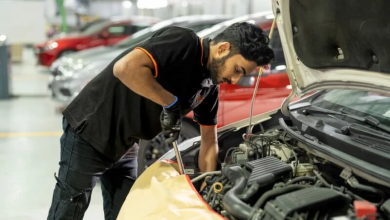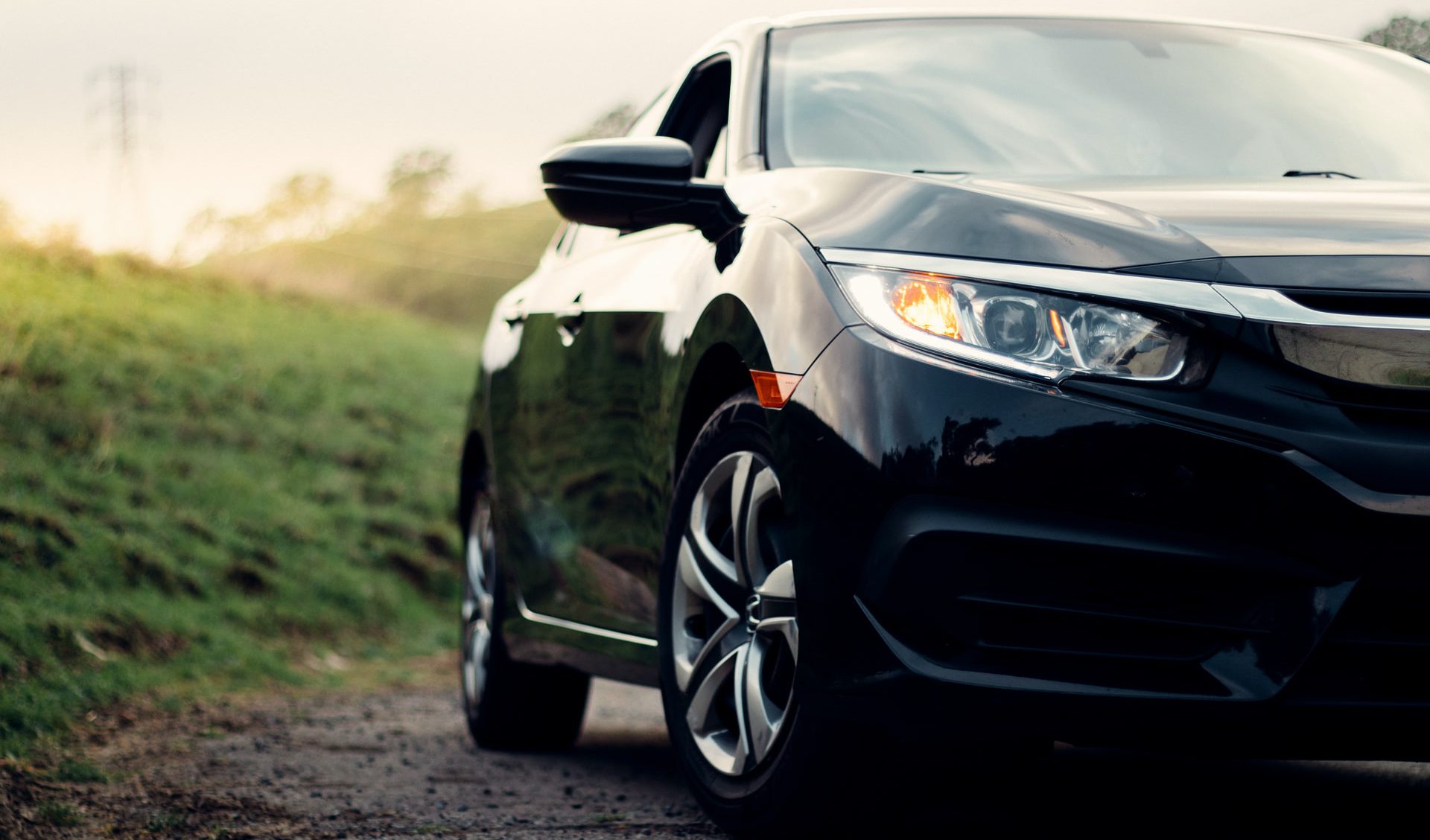A Complete Guide to Disinfect Your Car
It’s important to keep your car’s interior clean from germs and bacteria. Even more so now, with the COVID-19 pandemic affecting lives all over the world. Which is exactly why learning how to disinfect your car is so important.
While car disinfection may seem simple, it’s actually not. For proper disinfection, there are some items and cleaning agents required. These agents will ensure that the bacteria in your car is properly killed.
If you’re still figuring out how to disinfect your car, don’t worry! Let us bring you through a guide to disinfect your car’s interior. But before we begin, let’s go through the items you SHOULD NOT use to disinfect your car.
What You Should Not Use for Disinfection
Disinfecting your car interior is quite tricky because it’s quite easy to damage the materials. Using the wrong cleaning agents or too much water can spoil some parts of your car. You should put in more care when cleaning to avoid damaging your car. Because if your interior is damaged, your car’s valuation will be affected too.
Hydrogen Peroxide
When disinfecting your car, do not use any type of bleach or hydrogen peroxide (commonly found in multi-surface cleaners). Using these chemicals on your car’s interior can cause damage to vinyl and plastics. So, be very careful and remember to read the contents of these cleaners before using them.
Ammonia-Based Cleaning Products
Commonly found in ‘blue glass cleaners’, ammonia-based products will break down the vinyl on your dashboard. This will then make the vinyl sticky under heat and light from the sun. You also shouldn’t use these products on screens as it might damage the anti-glare coatings.
Too Much Water
Avoid using too much liquid when cleaning the interior, especially on the car seats. If you use too much water and the interior doesn’t dry in time, you’re putting your car at risk of growing mold and fungi. There’s also a good chance that your car will smell like a wet towel!
Now that you know what are the items to avoid, here are 5 items you need to start the disinfection process.
Now, let’s get into this guide on how to disinfect your car.
1. Protect and Prepare
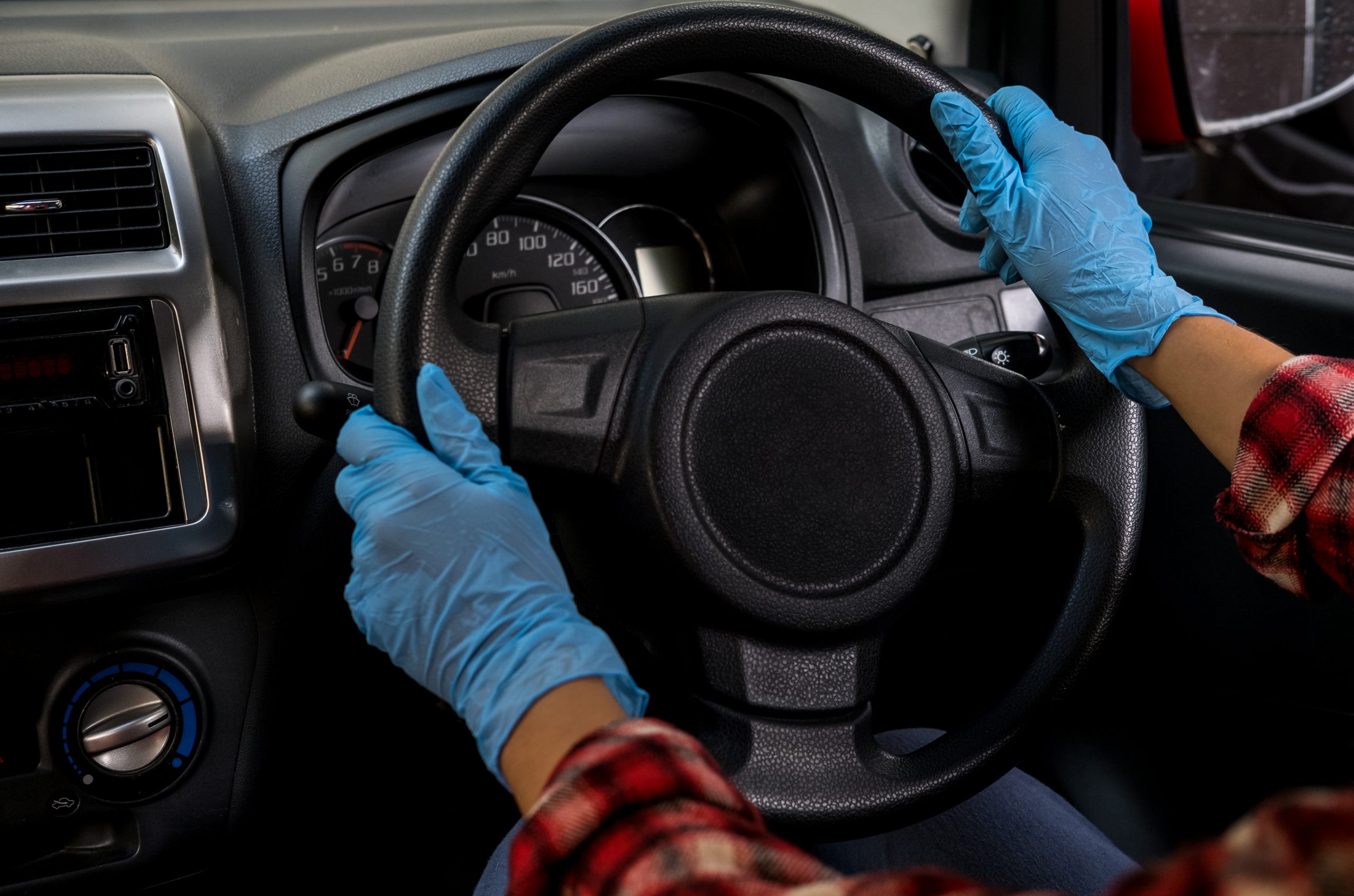
Before you start cleaning, you must protect yourself from germs and bacteria. The best thing to do is to first wash your hands with soap, then put on a pair of disposable rubber gloves. If soap and water is not available, you can use hand sanitizer instead.
Remember not to reuse these gloves as it is unhygienic and you could possibly be spreading even more germs around.
Next, it’s time to choose the cleaning agents and materials you will use. The cleaning agents you should use will depend on the materials in your car.
A common disinfectant chemical used is Isopropyl Alcohol. This is generally safe to use on most car surfaces and is effective in killing bacteria as well as removing stains. However, we don’t recommend using products with Isopropyl Alcohol on leather as it will damage and even discolour it.
Scroll down for more information on how to clean the leather in your car!
2. Focus Areas
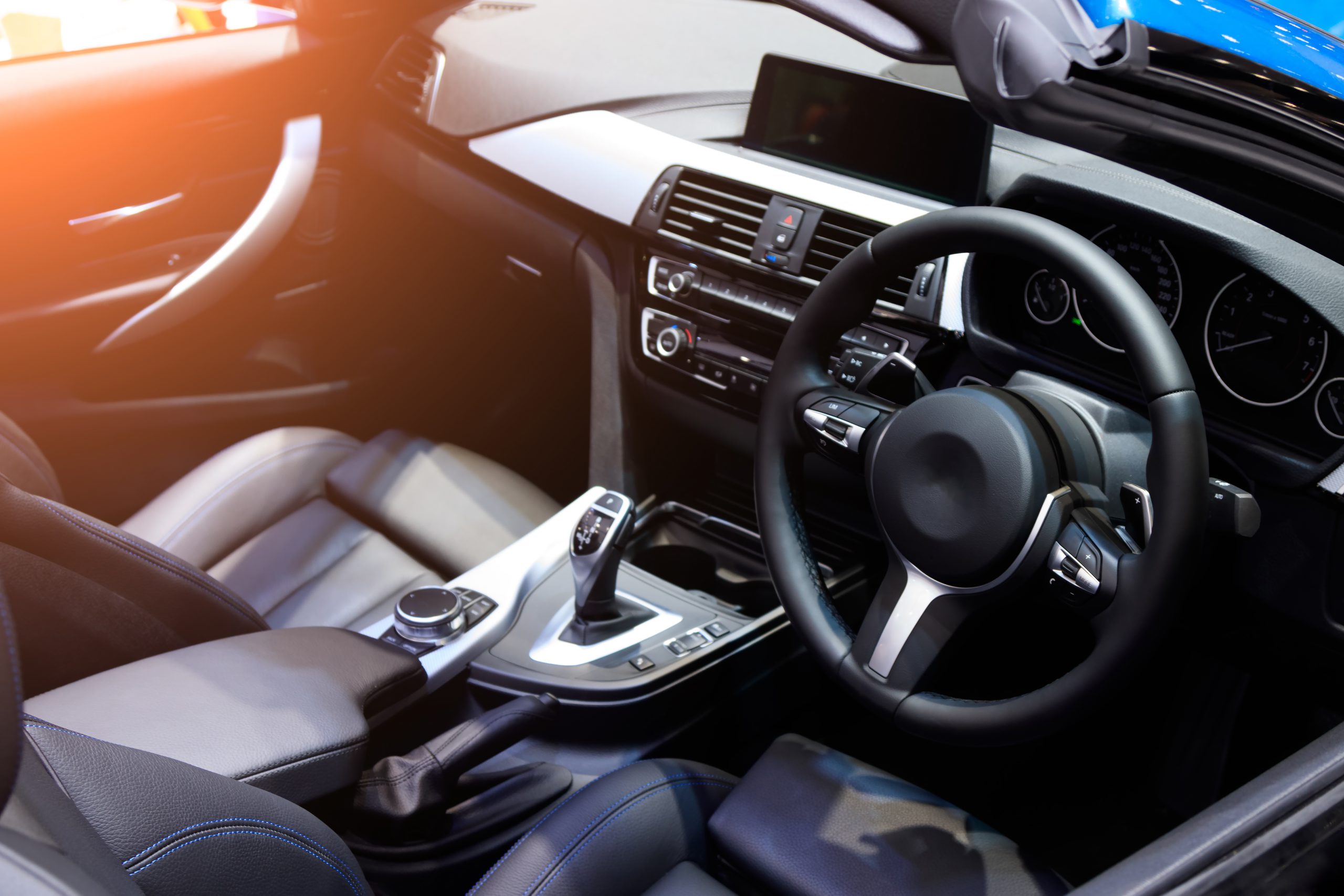
The areas that require more attention are the ones that are most often touched. So, focus on areas like the door handle, ventilation grilles and knobs, start button, steering wheel, gear lever and seatbelts.
These are common touchpoints in any vehicle but only you would know where else you should focus on in your own car. But one thing is for sure, your steering wheel is an area where you should spend a lot more time cleaning.
Reports have shown that your steering wheel is 4 times dirtier than a public toilet! So, make sure you spend a lot of time cleaning this area.
3. Disinfection Begins
Start off with using wet wipes to clean the entire interior (excluding the car seats). Remember to clean the ‘most-used’ areas like your gear lever, air-con and infotainment controls. Also, make sure the wet wipes you use contains sodium hypochlorite for maximum effectiveness.
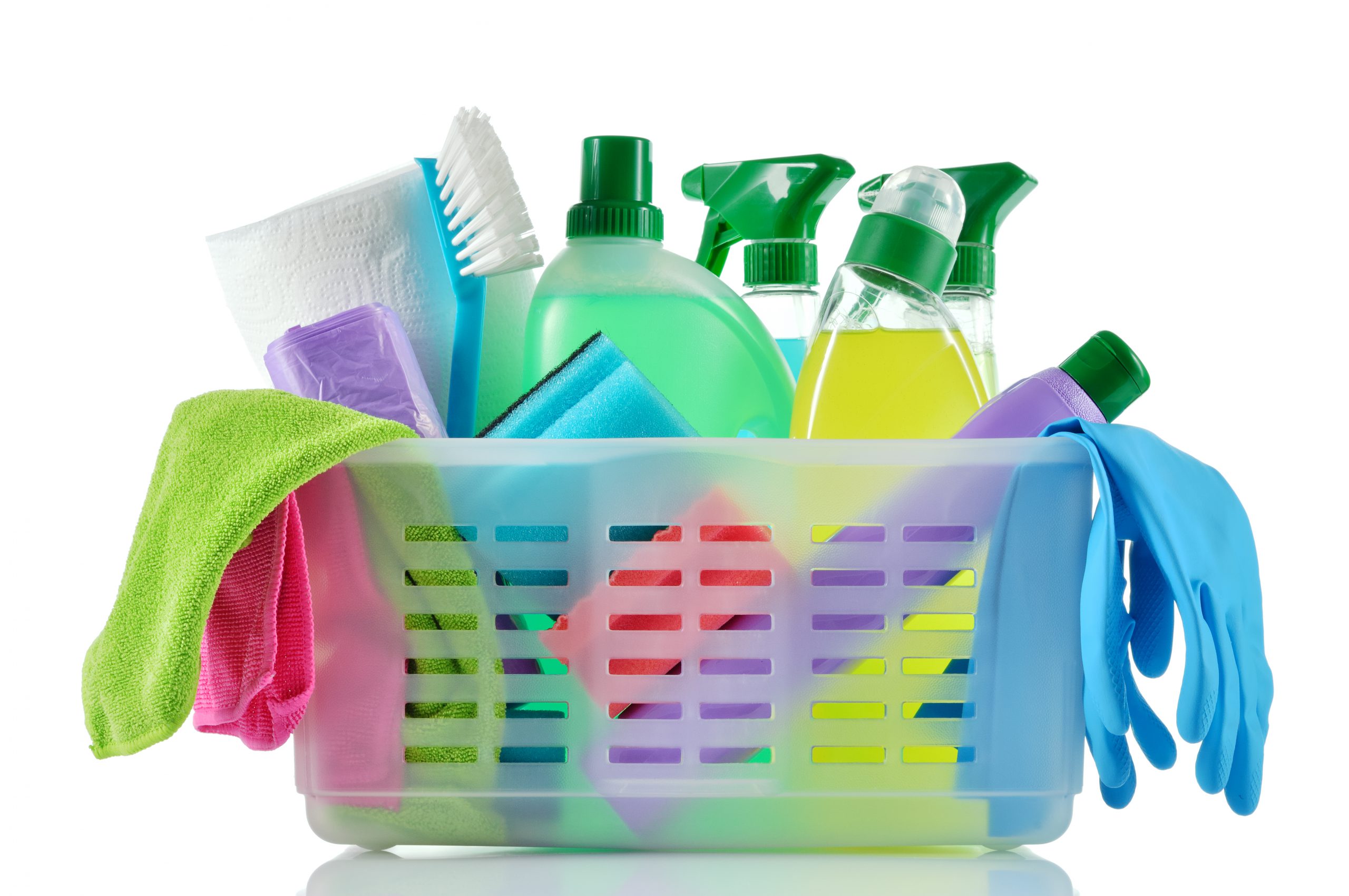
After you’re done with the wet wipes, switch to a multi-surface cleaner to further disinfect your car. Some might say that this is an unnecessary step. But it’s better to be safe than sorry, right?
Also, check to see if the cleaners you’re using contains benzylkonium/ benzylammonium chloride as these chemicals are known for their disinfecting properties.
The good thing about multi-surface cleaners is that it’s a liquid solution. Unlike wet wipes where you’re quite limited, the liquid solution will allow you to clean your carpet and reach every nook and cranny in your car.
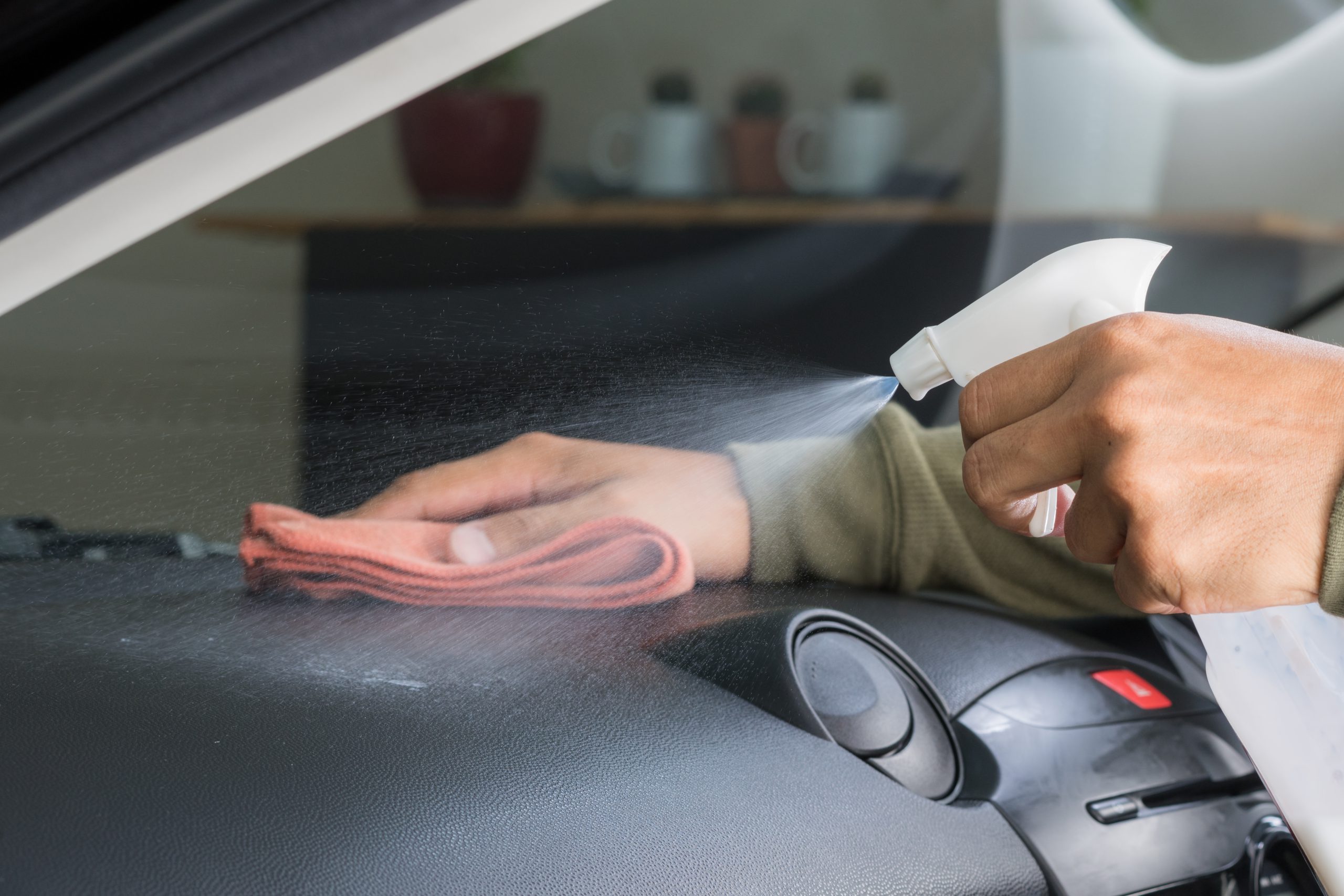
Simply spray and wipe down with a microfibre cloth, and you’re done. It’s important that you use a microfibre cloth instead of a rough cloth when cleaning the interior. Microfibre cloths are able to trap dirt easier while rough cloths might cause some scratches and damage your interior.
To ensure that no damage happens, try a softer approach while cleaning. Hard scrubbing can easily damage the materials in your car, something we’re sure you want to avoid. So just gently clean in circular motions to maintain the integrity of your car’s interior.
If you can’t get your hands on these cleaning products, you can use soap instead.
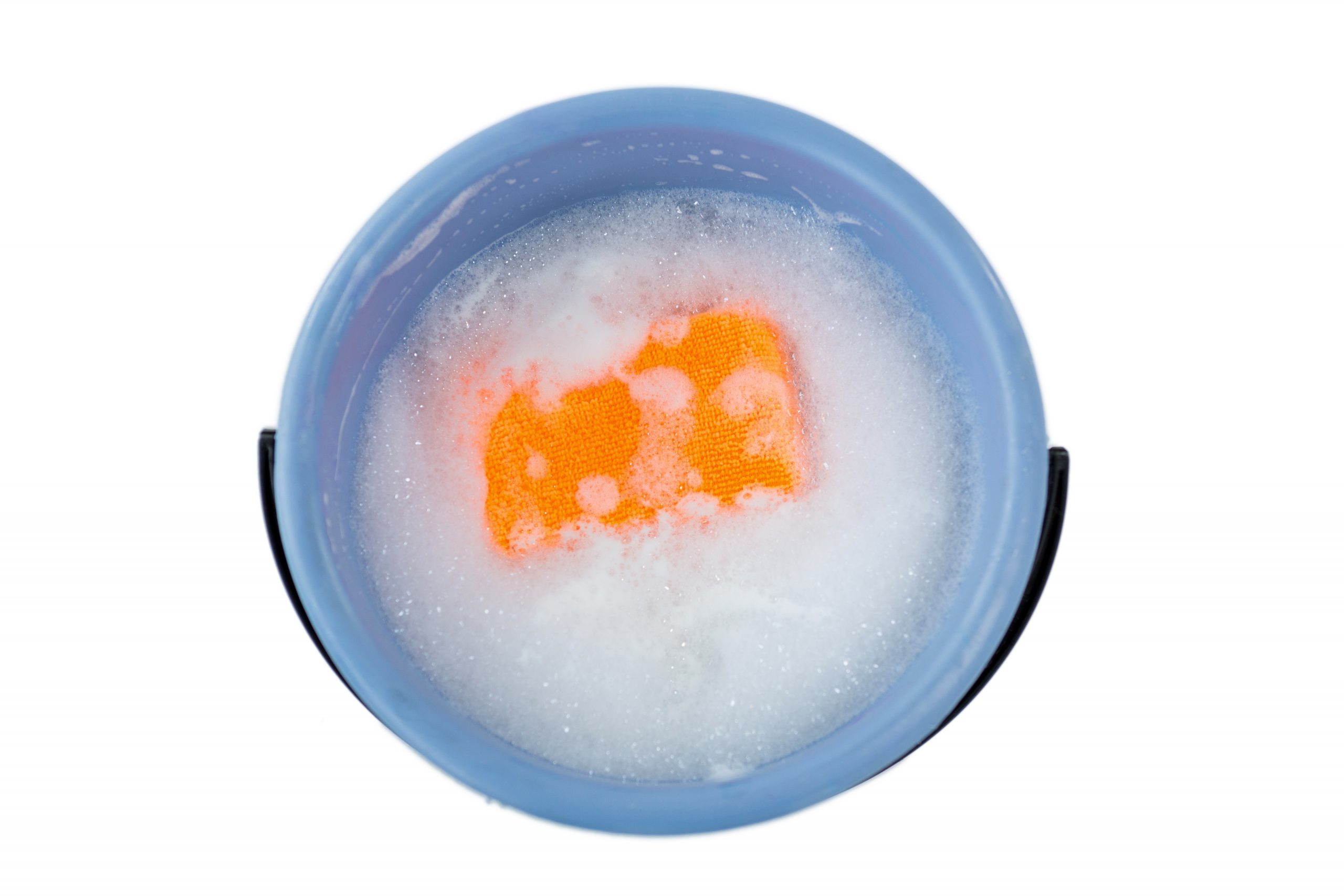
One of the properties of soap is that it’s able to break down oil and bacteria. So, using any type of soap would work too. Using soap might actually be a better option, especially on surfaces like fabrics or leather because it doesn’t contain as many chemicals that might harm the materials.
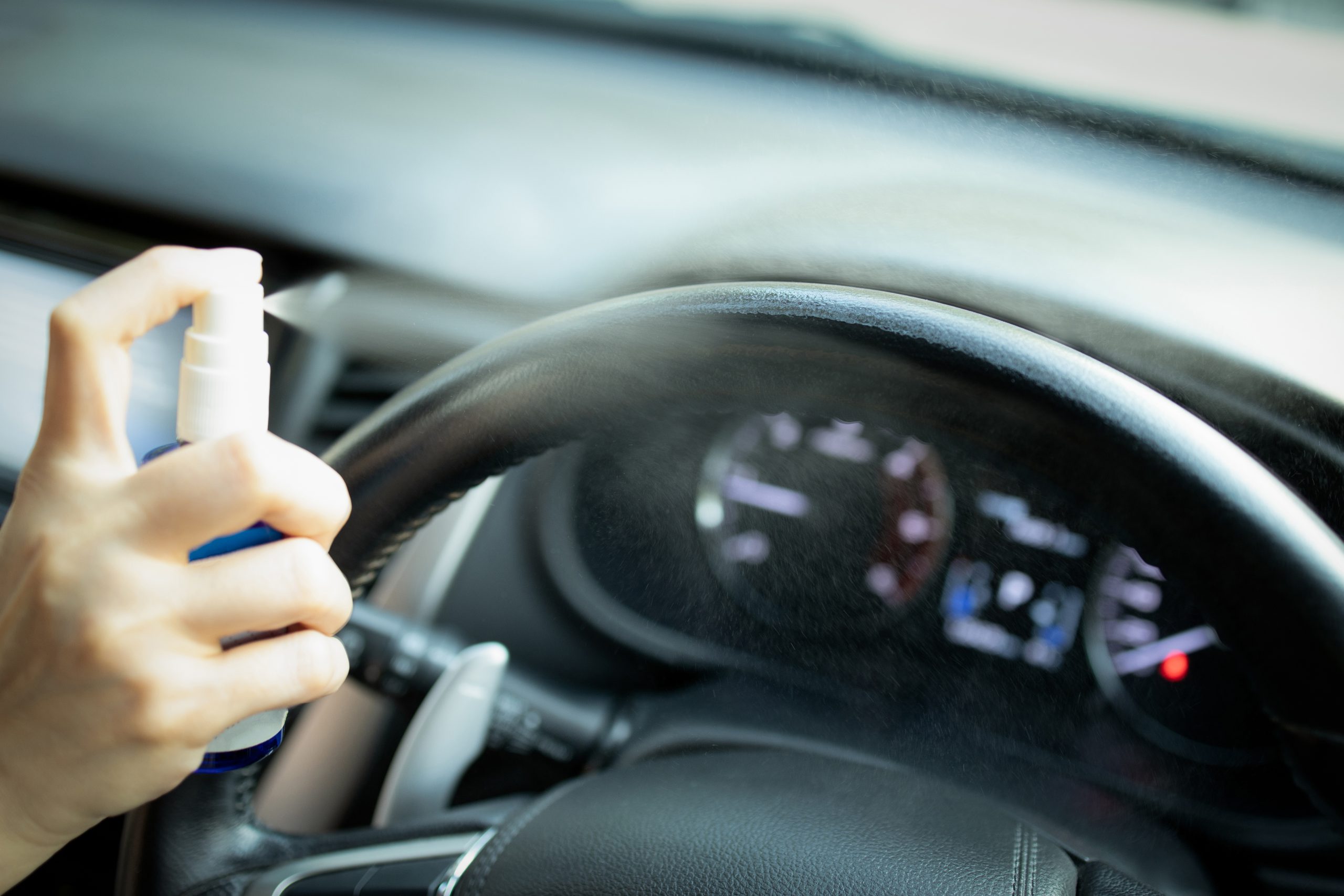
After cleaning your car’s interior with the aforementioned items, the last thing you would need to do is to use a sanitizing spray. Also known as deodorizing sprays, cleaners that contain triethylene glycol gets rid of bacteria in the air.
So, in an enclosed area like your car, this will be very effective. You can rest easy knowing that your car will be thoroughly disinfected. All you have to do is spray it inside an unoccupied car, preferably at the air-con vents. Make sure the air-con is switched on so that the spray circulates throughout the cabin.
4. Disinfect Your Car Seats
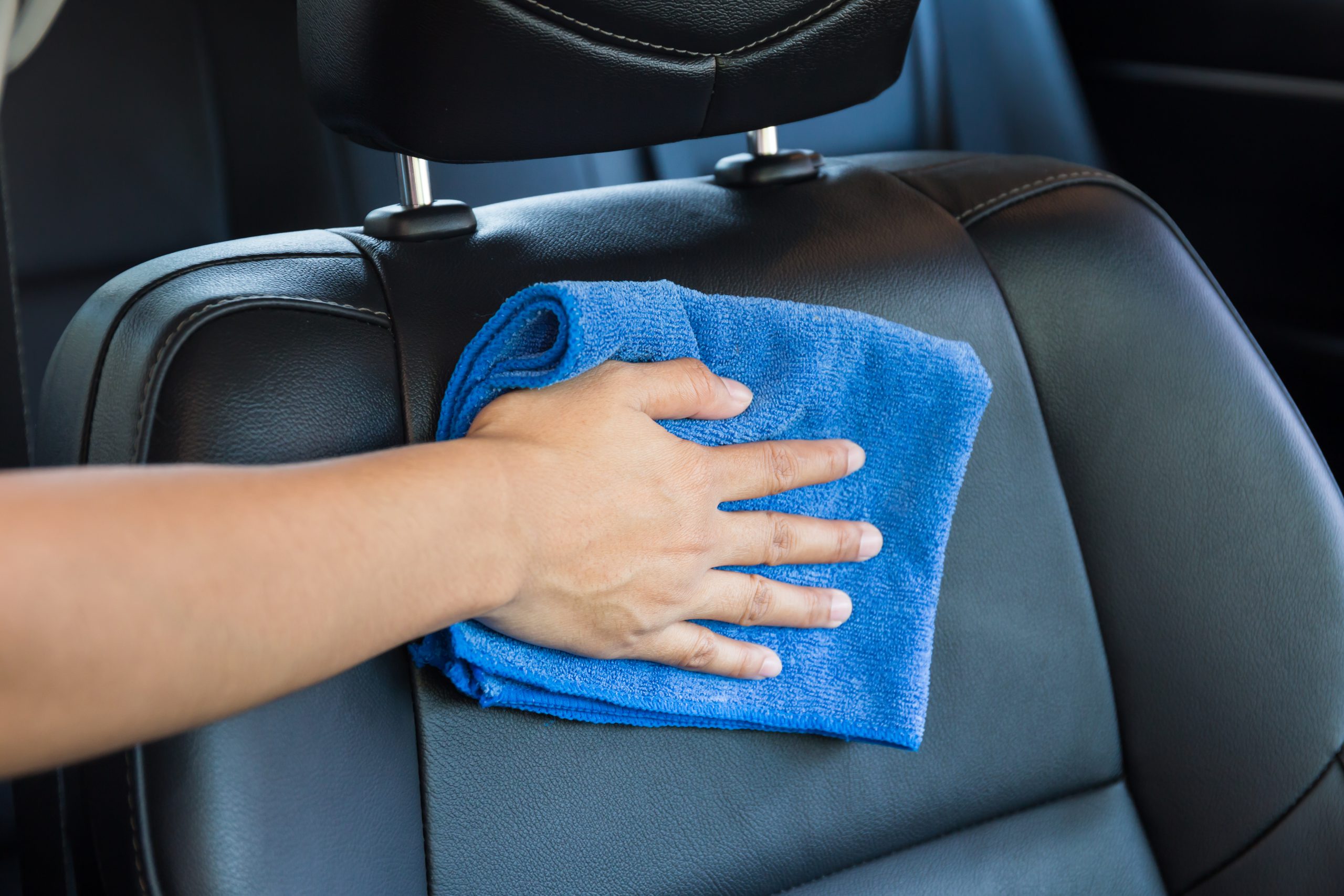
You can use soap and a sponge or multi-surface cleaners to clean your car seats. However, you must take note of its material before cleaning. For instance, if your car seats are made of fabric (nylon or vinyl), it’s pretty safe to use the chemicals we’ve mentioned. These fabrics are pretty durable and commonly used in most cars too.
However, we do not recommend using these chemicals on leather materials. While it’s generally safe to use on leather, especially faux leather, there’s still a chance that it might damage them.
Cleaning Leather
Instead, you can use a wet cloth or sponge with soap and water. Remember to do it gently and not scrub too hard when cleaning the leather seats. We also recommend finishing off the process with some leather conditioner to maintain its condition.
Also, make sure that you don’t use too much water or leave excess soap on the seats as these will damage them.
5. After Disinfecting the Interior
Once you’re done disinfecting the interior, give your car a good wash with soap! This ensures that your car will be clean inside and outside too. While washing your car will not protect it from carrying germs indefinitely, it’s good practice to wash it regularly.
It’s also important for you to maintain personal hygiene and cleanliness. Washing your hands before getting in your car will help keep your car clean. It’s good practice to also sanitize your hands or using wet wipes to clean your steering wheel once you get on.
People also liked: COVID-19 CIRCUIT BREAKER: IMPORTANT INFORMATION FOR CAR OWNERS TOP 5 REASONS FOR ACCIDENTS IN SINGAPORE HOW DO CAR SUBSCRIPTIONS HELP YOU SAVE MONEY

